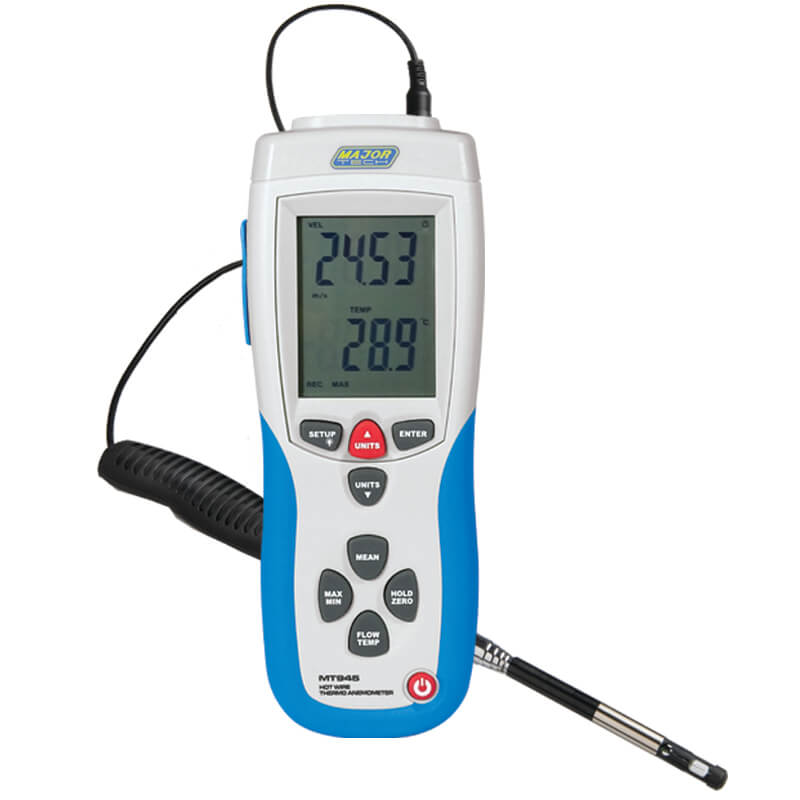Professional Tips for Calibrating Your Anemometer for Ideal Performance
Wiki Article
All You Need to Learn About Anemometers: How They Function, Why They Issue, and Where to Use Them
Anemometers, however usually overlooked in the world of scientific tools, play a vital role in different areas, offering valuable understandings right into wind rate and airflow patterns. Understanding the mechanics behind these tools is important for any person looking for to harness the power of this data. From meteorologists tracking weather patterns to designers creating structures with wind tons in mind, the applications of anemometers are far-ranging and varied. As we look into the details of anemometer modern technology, we will uncover the internal operations of these tools, their value, and the crucial factors to consider when selecting the ideal anemometer for specific applications.
Anemometer Basics
A vital instrument made use of to measure wind rate and direction, the anemometer plays an essential role in weather forecasting and different sectors. An anemometer normally consists of three or 4 cups that revolve in the wind, a vane that points right into the wind, and sensing units to track the rotations or activities.
There are numerous sorts of anemometers readily available, including cup anemometers, vane anemometers, hot-wire anemometers, and sonic anemometers, each with its one-of-a-kind features and applications. Mug anemometers are commonly utilized for standard wind speed measurements, while vane anemometers are liked for directional measurements. Hot-wire anemometers appropriate for reduced airspeeds, and sonic anemometers are perfect for high-precision dimensions in research and commercial settings. Understanding the fundamentals of anemometers is essential for exact wind data collection and evaluation throughout various industries.
Concepts of Anemometer Procedure
Building on the foundational understanding of anemometer basics, the principles of anemometer procedure clarify the auto mechanics behind wind rate and direction measurements. Mug anemometers, for instance, have 3 or even more mugs that catch the wind, causing them to spin quicker as the wind speed rises. Hot-wire anemometers depend on a warmed cord that cools down as wind passes over it, with the rate of cooling determining the wind rate.Value of Anemometers
The relevance of anemometers in weather forecasting and different industries can not be overemphasized. Anemometers play a critical function in measuring wind rate and instructions, providing crucial information for weather projecting, environment studies, ecological monitoring, and air travel procedures. Meteorologists depend on anemometers to collect exact wind data, aiding them comprehend climate patterns, predict tornados, and concern timely cautions to the general public. In industries such as building and construction, agriculture, renewable resource, and maritime operations, anemometers are utilized to maximize processes, make sure safety and security, and enhance performance. For instance, wind ranch drivers utilize anemometers to assess wind problems and take full advantage of electrical energy manufacturing from wind generators. In the maritime industry, anemometers help ship navigating by giving real-time wind information to find this captains, helping them make informed decisions to make sure secure voyages. Overall, anemometers are crucial devices that add significantly to security, effectiveness, and notified decision-making in weather forecasting and a variety of industries.Applications Across Various Industries
Applications of anemometers cover throughout varied industries, showcasing their versatility and energy beyond weather forecasting. In the renewable resource market, anemometers play a critical duty in evaluating wind problems for wind farm positionings, making sure optimum energy manufacturing. Industries like building and construction and mining utilize anemometers to monitor wind rates, important wikipedia reference for safety procedures, especially when operating at heights or in open-pit mines where strong winds can posture risks. Anemometers are also indispensable in the air travel sector, helping pilots in recognizing airspeed and wind direction for risk-free liftoffs and landings. The maritime industry gain from anemometers for ship navigating, helping sailors prepare for weather modifications and readjust courses accordingly. In agriculture, anemometers help farmers in taking care of crop spraying by offering real-time information on wind rate to stay clear of drift. Anemometers find applications in A/c systems to optimize airflow and enhance energy performance in buildings. The diverse use situations of anemometers highlight their value throughout numerous markets, highlighting their crucial role in enhancing operational safety and efficiency (anemometer).
Selecting the Right Anemometer for Your Demands
For general purposes, a mug anemometer is ideal for gauging wind rate, while a vane anemometer provides wind direction data. Hot-wire anemometers are perfect for low airspeed dimensions, and ultrasonic anemometers supply high precision and toughness.
Final Thought
In conclusion, anemometers play a critical role in determining wind rate and direction across different markets. It is important to think about the importance of anemometers in order to make enlightened decisions when choosing the most appropriate tool for measuring wind conditions.There are numerous types of anemometers offered, consisting of mug anemometers, click to read vane anemometers, hot-wire anemometers, and sonic anemometers, each with its unique functions and applications. Mug anemometers are typically utilized for basic wind speed measurements, while vane anemometers are liked for directional dimensions. Hot-wire anemometers are ideal for reduced airspeeds, and sonic anemometers are perfect for high-precision measurements in research study and commercial setups.Structure on the fundamental understanding of anemometer essentials, the concepts of anemometer procedure illuminate the mechanics behind wind rate and direction dimensions. For basic functions, a cup anemometer is suitable for measuring wind rate, while a vane anemometer provides wind instructions information.
Report this wiki page